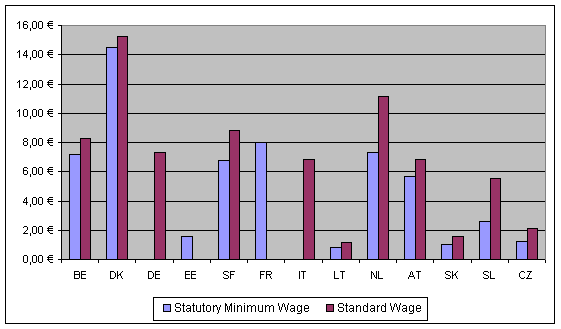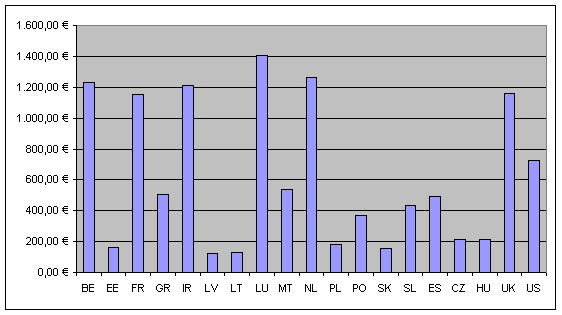Social Standards
Topics | Wages
Standard and Minimum Wages
In business sciences, a connection is always drawn between employment and the wage structure. In times of full employment, a high growth of wages can be achieved, in times of high unemployment, the wages are reduced. So, the companies are attempting to influence collective bargaining with the spectre of unemployment. Comparing the wages in different countries with the respective unemployment rates, one can say that the wages are the highest throughout Europe where the unemployment rates are the lowest.
The prosperity divide between the countries of Europe may, in the long-term, become a threat to collective agreements and thus to collective bargaining in general. The less that can be agreed upon between the social partners in free negotiations, the more necessary it becomes for the state to issue stipulations, e.g. in the form of decrees, rulings and regulations on minimum wages, to prevent a general impoverishment.
| very good | good | satisfactory | not so good | |
|---|---|---|---|---|
| Italy | ||||
| Slovenia | ||||
| Finland | ||||
| Belgium | ||||
| Lithuania | ||||
| Estonia | ||||
| Slovakia | ||||
| Czechia | ||||
| Austria | ||||
| Netherlands |
Whereas in the North Western European countries, such as the Netherlands and Denmark, the wages are relatively high, the wages in Central European countries, such as Slovenia and Poland, however, are not even a quarter of the former. In central countries, such as Germany, Austria and (Northern) Italy, which are situated directly along the “prosperity border”, these differences will lead to a disruption of the wage structure.
The influence of the state in collective bargaining also varies. Whereas, for instance, in Austria and Germany, the parties to the collective bargaining process negotiate the conditions themselves, influence by the state is possible in the United Kingdom.
Standard Wage - Minimum Wage (2004)

Legal Minimum Wages in Europe
In more or less three quarters of the countries of the European Union, the lower limits of income are stipulated by a legal minimum wage. In contrast to tariff wages, negotiated between the social partners, legal minimum wages are laid down by the government, in most cases, only following a hearing of the social partners.
The difference of tariff wages in agriculture as compared to the legal minimum wages is not so great in most of the European countries. In some countries, the difference is only one euro. In the accession countries, however, the difference between the minimum wage and the tariff wage is more than double the income.
Minimum Wages in Europe (2005)

© 2006 PECO-Institut e.V. | LEGAL NOTICE | CONTACT